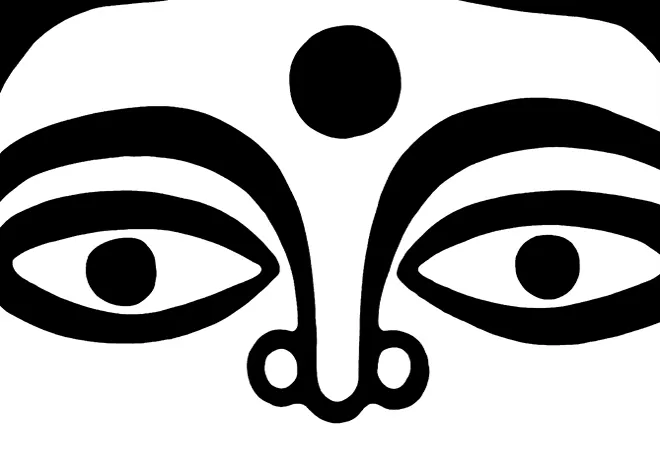
This article is part of the series — Catalysing Change: Women-led Development in the Decade of Action.
Aristotle is an illustrious name across the world; a man known for his philosophy and his sagacity in ancient Greece. What is less well known is that Aristotle wrote at length about the female body, describing it as being a ‘mutilated male body,’ with a wandering womb that only a man could tame. Perhaps, Aristotle may be forgiven for his theories about aberrant females, given that he lived a respectable 2,400 years ago. His ideas, however, persisted well into the Renaissance period with doctors convinced that the female body was simply the male form, turned inside out, with ‘female testicles’ hiding inside the woman’s body somewhere. These ideas have recently been highlighted in Caroline Criado Perez’s book Invisible Women: Exposing Data Bias in a World Designed for Men. Criado Perez has shown convincingly that gender-blindness in the tech world creates a ‘one-sits-fits-men’ approach so that today we quite literally have a world designed only for men. Criado Perez’s book is astounding in the volume of evidence it exposes but the obliteration of women’s legacies in all fields of life has a long and ignominious history, and is a result of endless male denial about women’s achievements.
The triumphant story of Amrapali’s inspiring life has been irredeemably altered, if not erased altogether.
More than a hundred years before Aristotle, there lived a woman in India called Amrapali. She was a beautiful, talented and immensely wealthy ganika, or courtesan, in the republic of Vaishali in ancient India. Her wealth and talent allowed her an impressive amount of liberty and agency — she built reservoirs in the city and was courted by the most powerful man of the region, king Bimbisara of Magadha. A chance encounter with a Buddhist monk later in her life changed the course of her destiny and Amrapali gave up her jewellery and silk clothes to take up, instead, the austere but companionable life of a Buddhist renunciant. In the Therigatha, a Buddhist text, we even have the words of a poem Amrapali wrote, an extraordinary elegy on the evanescence of beauty and youth, vibrant across the cold arc of more than two millennium. And yet the triumphant story of Amrapali’s inspiring life has been irredeemably altered, if not erased altogether. Over the centuries her story has become, instead, a cautionary tale of a ‘fallen’ woman, one who has to be saved from herself. The post-colonial novel Vaishali ki Nagarvadhu further incorporated Victorian moralising to make Amrapali a shrill, beaten woman, so that her shimmer disappeared altogether.
The transformation of Amrapali’s story is not an exception. It happens to almost every single historical and even mythological female figure in India. Indeed, what is unusual is that Amrapali’s life was recorded at all — an occurrence entirely due to the fortuitous coincidence of her life intersecting with the first extensively documented man in Indian history — Gautam Buddha. This is an endlessly repeated narrative, a re-writing of women’s stories by an elite patriarchy that is tireless in its quest to subdue women’s voices and control their terrifying sexuality and power by binding them to extremely narrow standards of acceptable feminine behaviour. And, so, we have the story of Rani Laxmibai, a vivacious, articulate and complicated woman campaigning for the independence of her native Jhansi, transformed through subsequent narratives into a one-dimensional ‘veerangana,’ a woman neatly folded into the shape of male heroism — death in battle, with all her vulnerabilities and individuality scuffed out. The fate was far worse for Hazrat Mahal, a contemporary of Rani Laxmibai who also fought for the independence of Awadh in 1857 with as much temerity and panache, but who did not quite fit into an acceptable mould of womanhood, being a divorced Muslim woman with a repudiated son, whereas, the Rani was an impeccable Brahmin widow. And so Hazrat Mahal’s legacy remains largely unsung.
For eons and life after life, the stories of women are erased and trampled upon.
These few examples are simply the dismaying consequence of the fact that recorded history globally over the past 5,000 years records the lives of men in 99 percent of cases. A great swathe of manuscripts, biographies, statues, art, architecture and writings celebrate the lives of men, while the women are a tiny, blink-and-you-miss-it, sliver of fragile words. For eons and life after life, the stories of women are erased and trampled upon. Where the words exist — like the biography of Humayun by Gulbadan, Akbar’s aunt, a unique record of a Muslim woman’s voice from within the Mughal harem — they are simply ignored by male record-keepers so that they disappear altogether. It took a woman historian, Ruby Lal, to finally bring attention to this extraordinary document 500 years later and, thereby, completely challenge our understanding of the Mughal harem, which till then had been almost exclusively written about with tainted malice by Victorian colonisers.
The result of this systemic refusal to record women, or to only allow them a sanitised, acceptable avatar, is an aberrant lack of role models for women to look up to and get inspiration and validation from. And, so, in 2017, after the mass molestation of women celebrating New Year’s eve in Bengaluru, women led marches to protest and claim — ‘I will go out.’ Because we have quite forgotten women like the 16th-century Bhakti poet Meerabai, who walked the dusty roads of India in search of a divine love, un-chaperoned and unveiled. Her truly transgressive story has been deified to such an extent that Gandhi praised her as an ‘ideal wife,’ perhaps, wilfully obliterating the fact that Meerabai was a young wife protesting the suffocatingly constricting strictures of her elite marital home when she decided to step outside of the sacrosanct boundaries of her house. An obliteration that allowed Maneka Gandhi to invoke the ‘lakshman rekha,’ that staunch upholder of patriarchal values, when criticising emancipated college women in the 21st century.
The result of this systemic refusal to record women, or to only allow them a sanitised, acceptable avatar, is an aberrant lack of role models for women to look up to and get inspiration and validation from.
To ensure that our daughters may tomorrow reach for the skies, it is, therefore, crucial that we tell them today of the countless armies of women who have raised their voices, who have raged, and fought, and sung. Who have ruled, and created and destroyed. So that ‘impossible’ is not a word that we need to teach them, ever, about their dreams and their ambitions.
The views expressed above belong to the author(s). ORF research and analyses now available on Telegram! Click here to access our curated content — blogs, longforms and interviews.




 PREV
PREV


